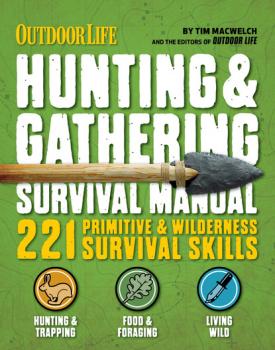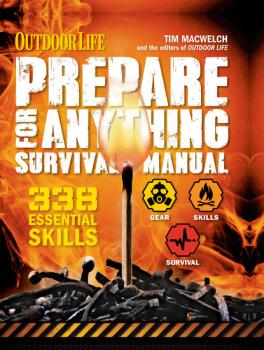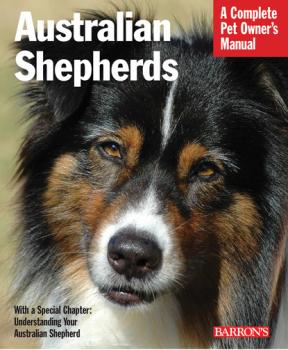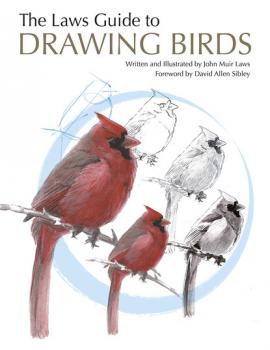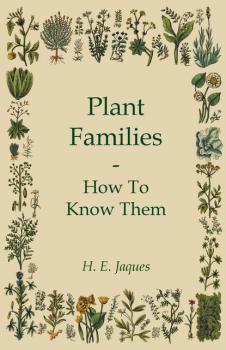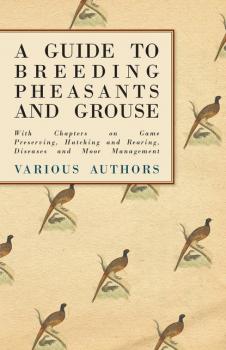Биология
Различные книги в жанре БиологияOutdoor Life: The Ultimate Survival Manual
Your Indispensable Go-To Guide for Surviving Anything
Get Ready, Get Set, Survive!
You’re lost in the woods without food or water. Confronted by an armed assailant in the dead of night. Forced to outrun a deadly tornado. Don’t worry—The Ultimate Survival Manual has you covered.
OUT IN THE WILD From navigating with a compass to fending off a mountain lion, learn to prevail in the forests, deserts, and open oceans like an expert outdoorsman.
DURING A DISASTER Whether it’s a towering tsunami or a blazing wildfire, bad things happen every day. Know what to do when the going gets tough.
IN AN URBAN CRISIS Arm yourself with the latest self-defense moves, weapons tips, and home-protection tactics, plus crucial strategies for handling bad guys and bad situations at home and abroad.
The Total Fishing Manual
GEAR UP How to pick the best lures, baits, flies, and tackle for every situation and every style of water you plan to fish. Customize your rod and reel to suit your every need. Learn how to customize your gear, get the most out of your boat, and more.
HIT THE WATER From small streams to major rivers, ponds to big lakes, and bays to the open ocean, hundreds of field-tested strategies will help you catch more fish with or without a boat.
FIND THE FISHProfessional fishing guides from across the country tell you how and where to find lunker bass, trophy walleyes, huge trout, and much more right in your home waters.
SET THE HOOK Whether you're bobber fishing for bluegills with the kids or heading out after the muskie of a lifetime, the techniques and tactics in this book will make your trip a success.
Outdoor Life: Hunting & Gathering Survival Manual
The modern hunter-gatherer's manual for learning important wilderness skills, surviving tough situations, and getting back to the land. Harvest nature's bounty and turn it into a gourmet meal; hunt and fish in the wild, with weapons or with your own two hands; and prepare for any outdoor adventure or emergency, whether you're lost in the woods or in need of herbal medicine. This book identifies it all, with step-by-step instructions and skills to make you a self-sufficient survivor—in your backyard and in the wild.
Outdoor Life: Prepare for Anything Survival Manual
Be Prepared. Be a Survivor.
Are you preparing for the collapse of society? If so, you are definitely not alone. In this timely follow-up to The Ultimate Survival Manual, Prepare for Anything is packed with hundreds of gear, skills, and survival tips and strategies to help you be ready for anything, from economic collapse and terrorism to natural disasters and government surveillance.
All over America, families are transforming spare rooms into long-term storage pantries, planting survival gardens, unplugging from the grid, converting their homes to alternative sources of energy, taking self-defense courses, and stocking up on just about everything and anything imaginable. So what are all of these people preparing for?
The motivations may vary, but the general consensus is that our world is becoming increasingly unstable, and there are a whole host of civilization-endangering events to be concerned about. Outdoor Life: Prepare for Anything will take you through these potential threats and teach you how to become prepared for them, from how to strategize and the right gear to your actions in the wake of a disaster—or simply how to get back to the land and become less dependent on the system. This is the book for the growing prepper movement, with hands-on hints, easy-to-use checklists, and engaging first-person stories to break down the crucial do’s and don’ts, educate yourself on various threats, and help to ensure that you ride out whatever Mother Nature, the government, foreign powers, or modern society can throw at you. Includes vital information on: • How to Prepare Skills to know in order to prep for a natural disaster, economic collapse, or societal restructuring. • Stock Up What should be in your house, pantry, basement, bunker, and go-bag. • What to Do How to handle yourself and your family in the wake of disaster, from creating a plan to leading your neighborhood watch.
The Tarantula Keeper's Guide
Terrarium hobbyists interested in acquiring a truly exotic pet as well as life science students will find virtually everything they need to know about keeping a tarantula in captivity. This book includes detailed information on the natural history and biology of these fascinating creatures, and the care chapter has been completely updated and revised. The book is filled with color photos and scientifically accurate line art, most of which examples are new to this second edition. Since its initial publication, hobbyists have come to consider this book the «Bible of Arachnoculture.»
Australian Shepherds
Discover expert advice about owning an Australian Shepherd, also known as an Aussie, so it lives a happy and healthy life. This title, along with all books in the comprehensive and popular <i> B.E.S. Complete Pet Owner's Manuals </i> series, provides advice on feeding, health care, housing, and all other important aspects of responsible pet ownership. Each title in the series is individually written from first page to last by a pet trainer, veterinarian, or other pet-care specialist. All <i> Complete Pet Owner's Manuals </i> are filled with high-quality photos and instructive line art.
The Laws Guide to Drawing Birds
John Muir Laws’s guide to drawing birds is itself winged, soaring between a devotion not only to art but also to the lives, forms, and postures of the birds themselves. Here, artistic technique and the exquisite details of natural history intertwine, and drawing becomes the vehicle for seeing. As Laws writes, “To draw feathers, you must understand how feathers grow, overlap, and insert into the body. To create the body, you must have an understanding of the bird’s skeletal structure. To pose this skeleton, you must be able to perceive the energy, intention, and life of the bird.” This how-to guide will perfect the technique of serious arists but also, perhaps more importantly, it will provide guidance for those who insist they can’t draw. Leading the mind and hand through a series of detailed exercises, Laws delivers what he promises: that “drawing birds opens you to the beauty of the world.” An Audubon Book.
Gardens of Gold
Since the start of colonial gold mining in the early 1920s, the Biangai villagers of Elauru and Winima in Papua New Guinea have moved away from planting yams and other subsistence foods to instead cultivating coffee and other cash crops and dishing for tradable flakes of gold. Decades of industrial gold mining, land development, conservation efforts, and biological research have wrought transformations in the landscape and entwined traditional Biangai gardening practices with Western capital, disrupting the relationship between place and person and the social reproduction of a community. Drawing from extensive ethnographic research, Jamon Halvaksz examines the role of place in informing indigenous relationships with conservation and development. How do Biangai make meaning with the physical world? Collapsing Western distinctions between self and an earthly other, Halvaksz shows us it is a sense of place—grounded in productive relationships between nature and culture—that connects Biangai to one another as “placepersons” and enables them to navigate global forces amid changing local and regional economies. Centering local responses along the frontiers of resource extraction, Gardens of Gold contributes to our understanding of how neoliberal economic practices intervene in place-based economies and identities.
Plant Families - How To Know Them
“Plant Families – How To Know Them” is a 1948 guide to identifying plants by H. E. Jaques. It aims to teach the reader how to readily attribute any and every plant they see to its proper family, as well as to provide them with a general understanding of the characteristics of said family of trees. This accessible and profusely-illustrated guide will appeal to nature lovers and is not to be missed by those with a keen interest in gardening. Contents include: “Some Plant Facts”, “A List of Reference Books”, “How to Use the Keys”, “Pictured-Keys for Identification of the Families of Plants”, “Algae”, “Lichens”, “Mosses and Liverworts”, “Ferns”, “Flowering Plants”, “A List of the Families of Plants in Their Logical Order”, and “Index and Illustrated Glossary”. Many vintage books such as this are increasingly scarce and expensive. It is with this in mind that we are republishing this volume now in an affordable, modern, high-quality edition complete with a specially-commissioned new introduction on the history of gardening.
A Guide to Breeding Pheasants and Grouse - With Chapters on Game Preserving, Hatching and Rearing, Diseases and Moor Management
Contained within this antique book is a comprehensive guide to breeding pheasants and grouse, including a wealth of important information on such topics as preservation, rearing, ailments and treatments, as well as habitat management. This helpful guide is sure to appeal to anyone with an interest in the breeding of pheasants and grouse, and it contains all the information necessary for successful endeavors in this field. The chapters of this book include: 'Why Breed Pheasants', 'Preparing for the Breeding Season', 'Rearing Pheasants and Partridges', 'Duties of the Gamekeeper', 'Rearing Game', 'Game Preserving in France', 'Grouse Disease', 'Moor Management', and 'In the Butts'. We have chosen this book for modern republication due to its timeless educational value, and we are proud to republish it now complete with a new introduction on poultry farming.


